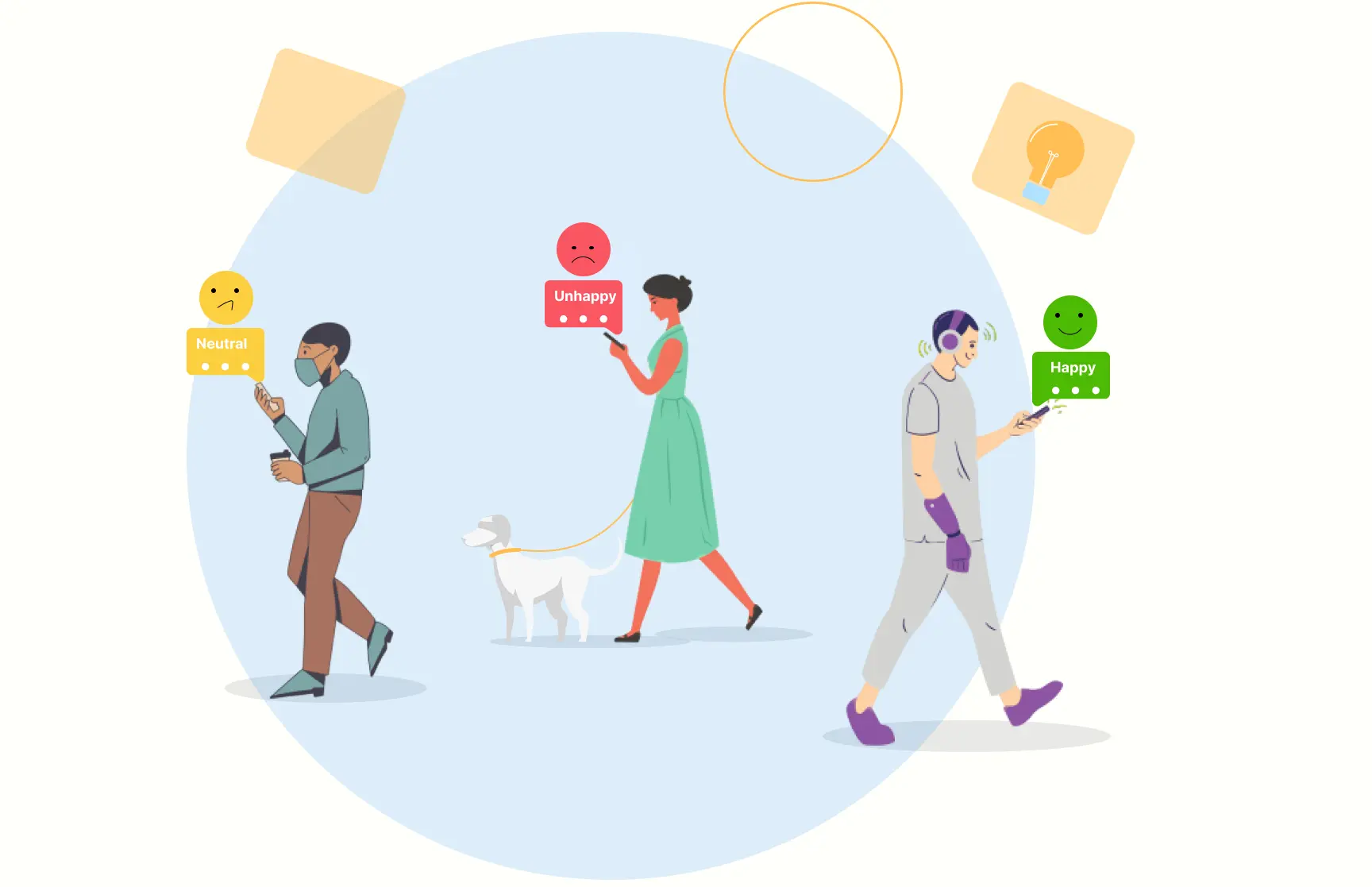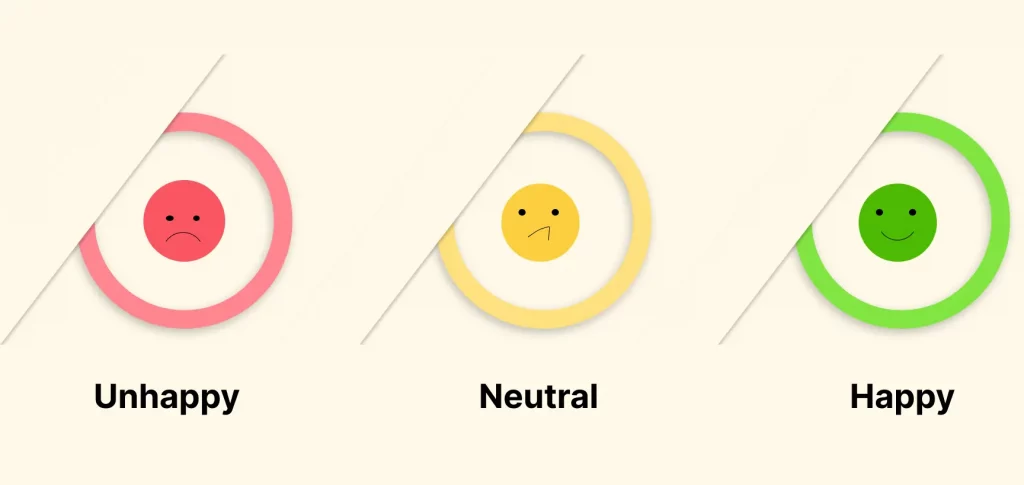
Sentiment Analysis: Its importance and its 4 types
What is Sentiment Analysis?
Sentiments are emotions and sentiment analysis as the name suggests is to analyze and determine the sentiment – positive, negative, or neutral, in a data set. The data set for sentiment analysis is mostly textual in nature and is often collected through customer feedback surveys.
It is also sometimes referred to as opinion mining and it helps businesses to analyze customer sentiments or opinions towards their product or service. Apart from customer needs, it is also famously used in determining and understanding social data and the brand reputation of a business.
Unlock Unlimited Surveys & Responses with Fynzo Survey – 99% Features Free Forever!
⭐ Rated #1 Trending Survey Tool by Software Suggest ⭐
Why Choose Fynzo Survey?
- Unlimited Surveys: Create as many surveys as you need without any limits.
- Unlimited Responses: Collect unlimited responses effortlessly.
- 99% Free Features: Access nearly all our powerful features for free, forever.
- User-Friendly: Easy setup, create your survey in minutes.
Types of Sentiment Analysis
By looking at the definition of sentiment analysis one might think that it analyses and determines the polarity of text in the form of positive, negative, or neutral. By large this understanding is right but sentiment analysis goes beyond text polarity and can also analyze certain emotions like anger, happiness, or sadness or can analyze the level of urgency indicated in feedback or a particular customer intention, for instance, say, interested or not interested.
Based on what aspect of customer feedback you want to analyze, you can classify sentiment analysis into different types. Let’s look at some of the most popularly used sentiment analysis classifications.
Graded Sentiment Analysis
Graded sentiment analysis is simply for determining the polarity of customer feedback. This can be the ideal analysis if your business’s main objective is to find the extent of polarity that the majority of customers have for your product or service. The data collected in this type of analysis can be on a scale of 1-5 where each numeric value is a representation of polarity options like very positive, positive, neutral, negative, and very negative. Here 5 can represent very positive and 1 can represent very negative and the rest can follow in order or vice versa.

Emotion Detection Sentiment Analysis
Emotion detection sentiment analysis as the name suggests accounts for certain emotions and goes beyond polarity. This type of analysis uses a complex machine learning algorithm to identify and segregate different emotions expressed by different customers in different manners. You can also use lexicons which are basically a certain list of words or emotions like angry, happy or sad, that you manually feed to your emotion detection system and reduce the cost and complexity of the system.
Aspect-based Sentiment Analysis
This type is a little different from the rest of them. Aspect-based sentiment analysis not only looks at the polarity in customer feedback but also figures out which particular aspect of the product or the customer journey, the polarity statement is linked to. Let’s look at an example and understand it better. Say, a customer leaves feedback stating “The quality of the camera lens is amazingly good”. In normal graded sentiment analysis, you will know that it’s good feedback but with aspect-based sentiment analysis, you will get to dig deeper and know that it’s the quality of the camera lens that earned a good polarity from the customer.
Multilingual Sentiment Analysis
Multilingual sentiment analysis is the most complicated sentiment analysis. In this type of sentimental analysis, an immense amount of pre-processing and resources are required as it analyses customer feedback across multiple ways like text, audio, or in any other format. You need to have a high level of technical knowledge in order to code and align multiple lexicons and noise detection algorithms.
Importance of Sentiment Analysis
You might be wondering if we have customer feedback data we can simply run various analyses on them and generate the reports. No doubt you can do that but sentiment analysis gives a whole new aspect to your already existing analysis. There are many ways in which this analysis can prove to be of great importance to your business. Let’s look at the importance of sentiment analysis and get a deeper understanding of the same.
- Not all customers fill out your feedback form but almost all customers leave a review in different ways. Think of your overall data access points. This will not only include surveys but will also account for customer tweets, chats with customer support, comments on your social media post, and many other places. Now the data access points seem to be huge and sorting thousands and thousands of data like this seems to be a never-ending task! But with sentiment analysis, you can sort data at a large scale as the main objective is to assemble, sort, and analyze all unstructured data in the most efficient and cost-effective manner possible.
- It gives you a real-time image of customers’ sentiment towards your product or service which can help you identify if a particular change has made people happy, angry, or sad and the level of urgency for the change that comes with customers’ emotions can be identified and worked upon.
- The analysis of people’s emotions from all the unstructured data is done by setting up consistent criteria on the basis of which the data gets sorted. These criteria remain constant through all the touch points for data collection which brings higher accuracy and better insights into the data and customers’ views.
Visualization of Sentiment Analysis
By now we have a decent understanding of sentiment analysis. But now the question arises that this type of analysis accounts for customers’ emotions but is mostly recorded on a scale so how can we generate and present a report on it?
The presentation of reports of this type of analysis is all the most similar to that of your multiple mathematical and statistical reports but the only thing that differs here is the criteria on which we are presenting them. Let’s look at different ways of sentiment analysis visualization and get a better grip on this too!
Unlock Unlimited Surveys & Responses with Fynzo Survey – 99% Features Free Forever!
⭐ Rated #1 Trending Survey Tool by Software Suggest ⭐
Why Choose Fynzo Survey?
- Unlimited Surveys: Create as many surveys as you need without any limits.
- Unlimited Responses: Collect unlimited responses effortlessly.
- 99% Free Features: Access nearly all our powerful features for free, forever.
- User-Friendly: Easy setup, create your survey in minutes.
Overall sentiment
This type of analysis visualization presents the polarity/urgency/ any other factor on the grade in a graphical form.
Sentiment Overtime
This type of analysis visualization presents the changes in the customers’ emotions toward your product or service over a period of time.
Sentiment by Topic
In this type of analysis visualization you will get to see the customers’ responses along with the multiple aspects with which the response is associated.
Conclusion
Now that we have a complete understanding of sentiment analysis we can see that it has taken data analysis to another level and is constantly evolving with the upcoming tools and technologies. It has given us a way to generate reports even from the most unstructured datasets. Let’s incorporate this type of analysis in your business analysis report and stand out from the rest of the competitors by gathering unique information about customers and their emotions towards the need or the use of a product or service!
FAQs
What is a good sentiment analysis score?
As the sentiment analysis tells the positivity or negativity in the overall text. Therefore an overall score of below -0.05 is considered negative and anything above 0.05 is considered positive.
Which algorithm is best for sentiment analysis?
There are many algorithms used for sentiment analysis but there are some which give extraordinary results like logistic regression, SVM, Random forest, and Naive Bayes.







